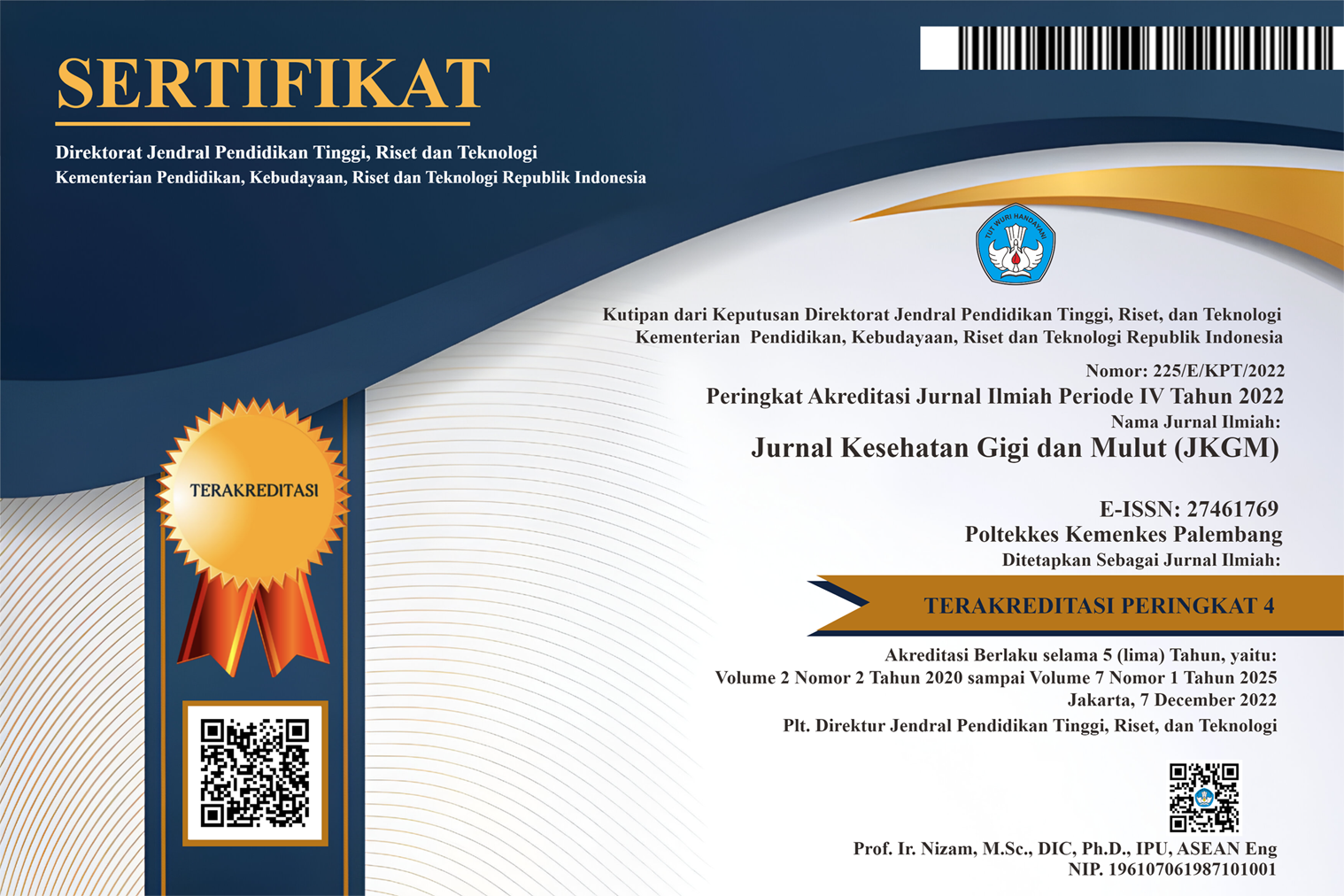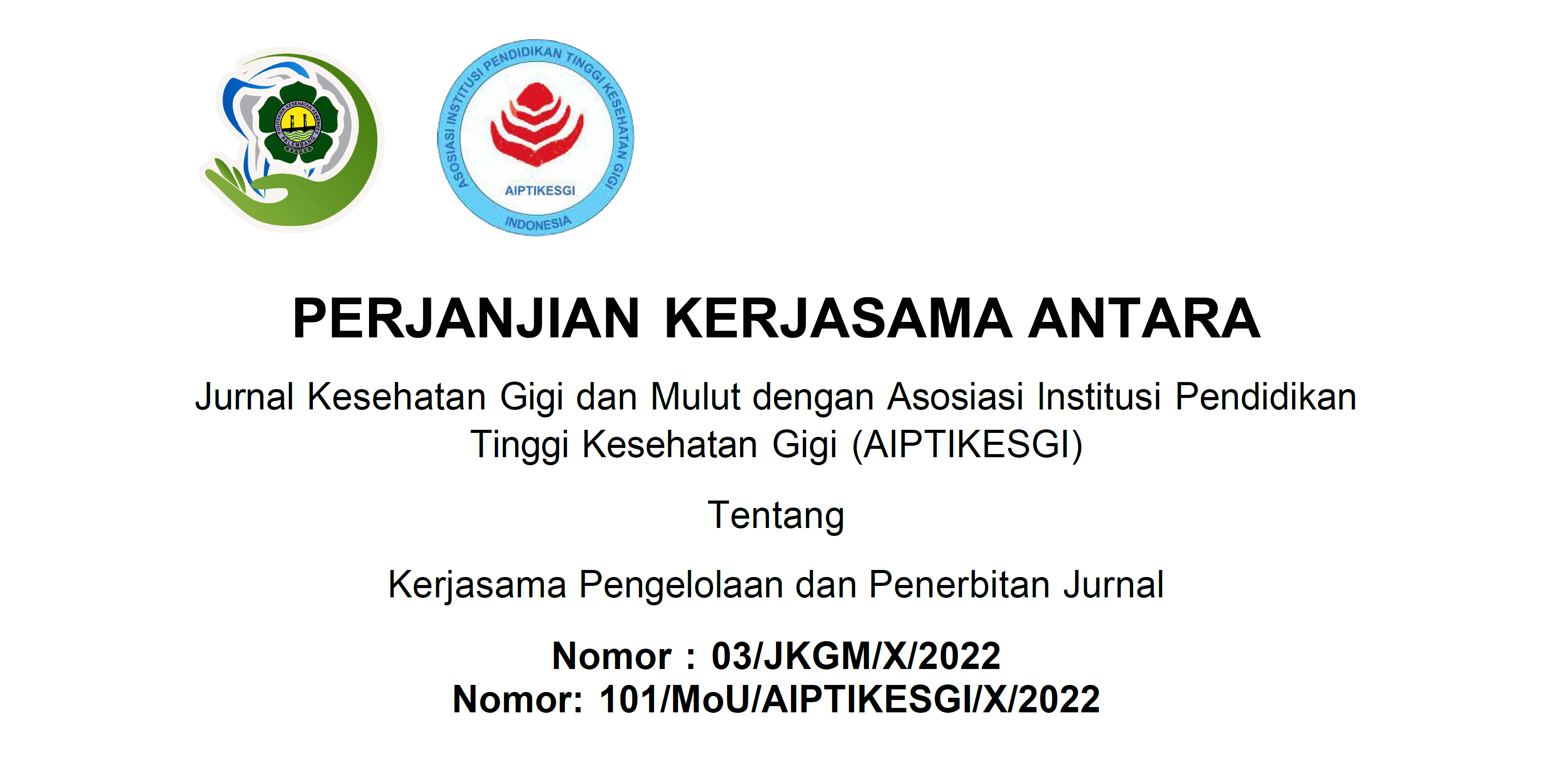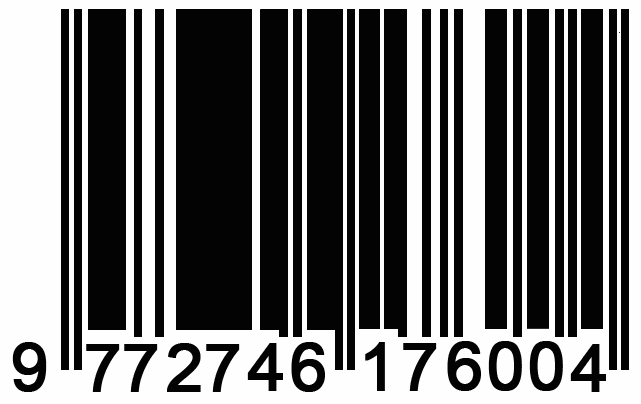UJI AKTIVITAS ANTIBAKTERI EKSTRAK BUAH RAMBUSA (Passiflora foetida L.) TERHADAP PERTUMBUHAN BAKTERI Lactobacillus acidophilus ATCC 4356
Abstract
Latar Belakang: Lactobacillus acidophilus adalah bakteri gram-positif yang bersifat anaerobik fakultatif, asidurik, dan asidogenik yang berperan dalam perkembangan karies sekunder. Karies sekunder dapat terjadi setelah gigi direstorasi karena adanya bakteri yang tertinggal di smear layer saat melakukan preparasi kavitas. Karies sekunder dapat dicegah dengan penggunaan cavity cleanser. Buah rambusa mengandung senyawa antibakteri seperti alkaloid, saponin, tanin, triterpenoid, steroid, dan flavonoid yang berpotensi sebagai cavity cleanser.
Metode: Penelitian ini merupakan penelitian eksperimental laboratoris dengan desain penelitian post-test only control group design. Kelompok perlakuan dalam penelitian ini adalah ekstrak buah rambusa dengan konsentrasi 12,5%, 25%, 37,5%, dan 50% serta DMSO 10% sebagai kontrol negatif. Uji daya hambat dilakukan dengan metode difusi cakram Kirby-Bauer dengan media MRS-A. Analisis data hasil penelitian dilakukan dengan menggunakan uji Kruskal Wallis dan dilanjutkan dengan uji Post Hoc Mann-Whitney.
Hasil: Rata-rata diameter zona hambat terbesar adalah 5,30 ± 0,83 mm yang dibentuk oleh ekstrak buah rambusa konsentrasi 50%, sedangkan rata-rata diameter zona hambat terkecil dibentuk oleh ekstrak konsentrasi 12,5% dan kontrol negatif sebesar 0 mm. Hasil uji Kruskal Wallis menunjukkan nilai p < 0,05 artinya terdapat perbedaan signifikan antarkelompok perlakuan dan kontrol negatif.
Kesimpulan: Terdapat aktivitas daya hambat ekstrak buah rambusa (Passiflora foetida L.) terhadap pertumbuhan bakteri Lactobacillus acidophilus ATCC 4356 dengan zona hambat terbesar dibentuk oleh ekstrak buah rambusa konsentrasi 50%.
Kata kunci : anti bakteri; cavity cleanser; karies; Lactobacillus acidophilus; rambusa (Passiflora foetida L.)
Copyright (c) 2024 Jurnal Kesehatan Gigi dan Mulut (JKGM)

This work is licensed under a Creative Commons Attribution-ShareAlike 4.0 International License.
Authors who publish with this journal agree to the following terms:
- Authors retain copyright and grant the journal right of first publication with the work simultaneously licensed under a Creative Commons Attribution License that allows others to share the work with an acknowledgement of the work's authorship and initial publication in this journal.
- Authors are able to enter into separate, additional contractual arrangements for the non-exclusive distribution of the journal's published version of the work (e.g., post it to an institutional repository or publish it in a book), with an acknowledgement of its initial publication in this journal.
- Authors are permitted and encouraged to post their work online (e.g., in institutional repositories or on their website) prior to and during the submission process, as it can lead to productive exchanges, as well as earlier and greater citation of published work















